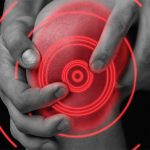“We found that the presence of OA doubled the risk of central sensitization, and as the severity of OA increased, so did the chance of central sensitization,” says Dr. Neogi. She adds that the data also suggested that the longer the duration of OA, the greater the risk of central sensitization.
Dr. Neogi also found that if central sensitization is present in a person who has had total knee replacement (TKR), the risk of pain in the replaced knee is twice what it would be in a person without central sensitization and that these patients were 67% less likely to experience pain improvement. Dr. Neogi notes that in future research, it will be important to determine if central sensitization can be used to predict TKR outcome and to determine if it is possible to time TKR so that central sensitization changes are not yet permanent. Dr. Neogi believes that people are probably not at equal risk, and that genetics or other factors may modulate this risk. Research conducted during the next three to five years may hold the answers to some of these questions.
What to do in the meantime? “We don’t have an effective treatment that alters progression of OA,” she says, adding that additional research may determine if there’s any potential benefit of knee bracing or orthotics. Physical therapy for musculoskeletal and gait issues are important, she says, adding that nonpharmacologic approaches are cost effective but underused. She urged more attention to sleep, mood, and coping issues in these patients.
Weight loss is also critical. “Without it, anything you try will be less effective,” she concludes.
The Hidden Dangers of Opioids: Opioid-Induced Hyperalgesia
Imagine how difficult it would be to take seriously a colleague’s report that the more sugar he added to his coffee, the more bitter it tasted. That’s the challenge potentially faced by pain specialists who introduce the concept of opioid-induced hyperalgesia to a patient with chronic pain problems, as described at the conference by Jianren Mao, MD, PhD, director of the Massachusetts General Hospital Center for Translational Pain Research and associate professor at Harvard Medical School in Boston.
Dr. Mao’s recent research explores the paradoxical phenomenon of opioid-induced hyperalgesia. Unlike tolerance, hyperalgesia is characterized by an increase in pain perception that seems to be worsened, not improved, by dosage escalation.1
“No one can say for sure, but there have been clinical reports of people whose pain is exacerbated at higher opioid doses. When the dose is reduced, they feel better,” he says.



